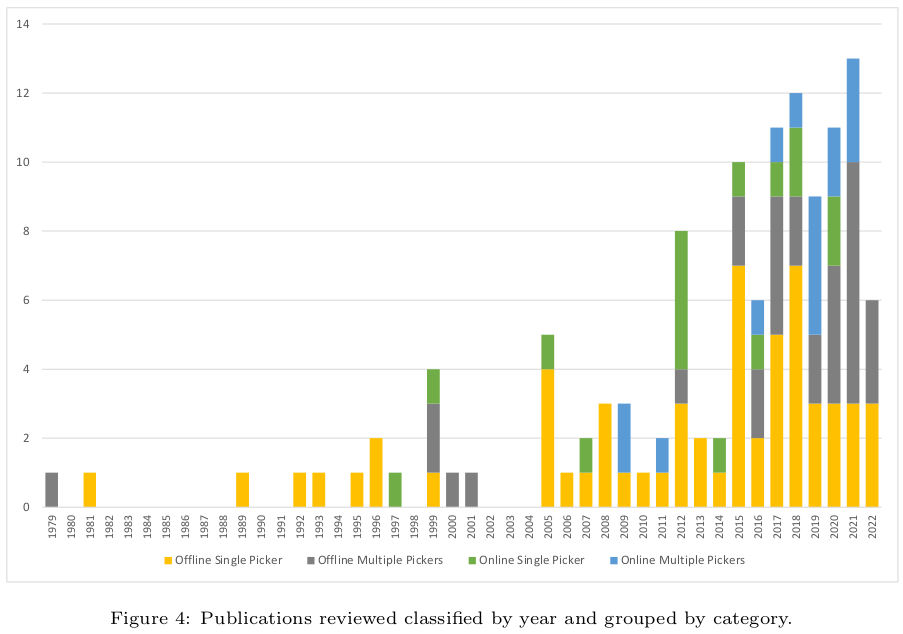📈 #15 Warehouses -Part I-: the strategic cornerstone of modern logistics
From warehouse strategy to daily excellence in operational planning
Warehouses play a crucial role in modern logistics.
They stand as critical hubs, orchestrating the movement of goods from suppliers to customers.
These vast spaces, often buzzing with activity, are not mere storage facilities; they are strategic lynchpins that play a pivotal role in supply chain efficiency, customer satisfaction, and overall business success.
Problems that arise at an operational level -the day-to-day of a warehouse- are researched more and more over the years.
So all of this have to be managed as best as possible.
Today in Feasible we are going to see:
The increasingly importance of warehouses in supply chain
The problems that arise at the three levels of management of a warehouse
The essential area to obtain an operational excellence in warehouses
Let’s go for it!
📦 The increasing importance of warehouses in supply chain
Traditionally viewed as passive storage centers, warehouses have evolved into dynamic, strategic assets in the modern supply chain. This transformation is driven by several factors, including:
Evolving customer expectations: consumers demand faster delivery times, wider product assortments, and customized options, putting immense pressure on supply chains to adapt.
Globalized supply chains: complex global supply chains, spanning continents and time zones, require warehouses to act as distribution hubs, ensuring seamless product flows across borders.
Technological advancements: the rise of automation, robotics, and data analytics has opened up new possibilities for optimizing warehouse operations, enhancing efficiency, and reducing costs.
Warehouses now play a strategic role in various aspects of supply chain management, including:
Demand planning and inventory management: warehouses serve as buffers between supply and demand, ensuring that the right products are available in the right quantities at the right time.
Order fulfillment: warehouses orchestrate the picking, packing, and shipping of orders, ensuring timely and accurate deliveries to customers.
Network optimization: warehouses are strategically located within supply chains to minimize transportation costs, reduce lead times, and improve responsiveness to customer demands.
And this is not happening only in real life operations of a warehouse, they are even more interesting from the research point of view.
As we can see in Order batching problems: Taxonomy and literature review by Eduardo G. Pardo et al., there is an increasing demand for optimizing in-warehouse operations for the last 20 years:
Now that we know why are they important, let’s address the following question: what are the kind of problems that we can see in a warehouse?
🆘 The problems that arise at the three levels of management of a warehouse
From transportation of goods to production of TVs in a factory, or planning the construction of homes, almost any business has to deal with three main levels of management.
Those levels come from different perspectives and you may think of them as a long-term view (strategic management), mid-term view (tactical management), and short-term view (operational management).
And warehouses are not different.
At the strategic level, decisions shape the foundation of warehouse operations. From determining the physical layout of the warehouse to choosing the level of automation, these choices set the stage for efficiency and scalability.
In the tactical level, decisions are made regarding the positioning of goods, the number and location of depots, and the choice between manual and automated processes.
While at an operational level, decisions are made on a daily basis, affecting order retrieval and fulfillment.
You can see a very good summary of all of them in that same research paper by Eduardo G. Pardo et al.:
🎯 The essential area to obtain an operational excellence in warehouses
As it is already said in Eduardo G. Pardo et al.:
The profit obtained in a warehouse is strongly dependent on how the management systems determine the operational actions.
Or in other words: the day-to-day operations of a warehouse will show the profitability of a warehouse.
In a typical warehose, warehouse receive orders from customers, the products from the orders are picked, moved to a common area, packed and shipped to the customer. The most intensive part of that chain is, as you can guess, the picking part, since it consumes a lot of time.
🤯 In fact, picking tasks can consume up to 60% of the total time of the total time of all labor activities in a warehouse, which can suppose more than half of the total operational costs.
So first conclusion here: reducing picking tasks will cut the costs in a warehouse.
And remember the Vehicle Routing Problem discussed the other day?
Well, you can think of the picking problem as a similar one: a worker with a picking cart needs to traverse the warehouse to collect all the products and go to the depot, as if it were cities in a map, minimizing the retrieving time as much as possible.
But, but, bUt, BUT…
It’s pretty common to batch different orders so workers collect several of them in the same route.
First they group, then they collect.
And this adds a new layer of thought that makes the problem of retrieving orders in the minimum possible time even more difficult: each new set of orders that you group to collect together will give you a different route with a different retrieving time.
On top, there are multiple decisions to make here, like: do they need to wait for the next order to come? And if so, for how much time? Should they pick by batch, by order, by product? Is there any policy on how to traverse the warehouse to retrieve all the items?
Workers usually have a device that tell them exactly the products to retrieve in a single route, but having so many rules and variables to take into account… How are they calculated?
Exactly: algorithms.
Because otherwise it would be so difficult they i) never collected any product at all since they would be overhelmed by the job, or ii) took a lot of time while retrieving them.
🤔 Some conclusions
In today’s post we have seen that:
Warehouses are crucial hubs in modern supply chains.
Warehouse management encompasses three levels: strategic, tactical, and operational, as in several business with planning issues.
Operational excellence in warehouses hinges on optimizing picking tasks.
Algorithms play a vital role in optimizing picking operations.
This has been an overview of how warehouses work in their day-to-day. And in just a few weeks I’ll be covering the last part: what kind of algorithms can we use to save some time -and money- in warehouse operations.
Until then,
Borja.








